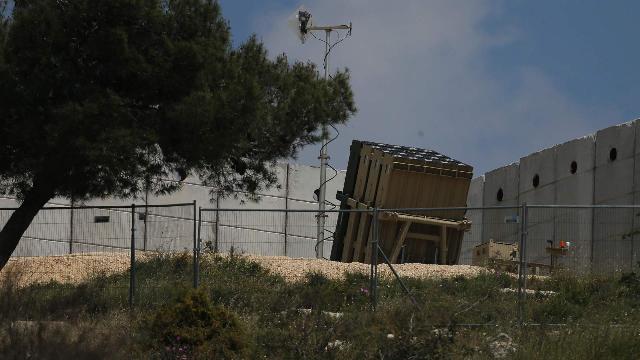The Iranian strikes are being countered by some of the most serious missile defense and air defense systems in the world.
Israel's defensive systems are an important part of the active phase of the Iran-Israel conflict. Iranian missile strikes are being countered by one of the most serious missile defense systems in the world. About which complexes of the Israel Defense Forces repel massive rocket attacks, how they work and how effective they are — in the Izvestia material.
On a ballistic trajectory
Iran is currently attacking Israel with medium-range missiles flying over Iraq, Jordan and Saudi Arabia. The attacks are carried out from a distance of 1300 to 2000 km. Most missiles are single—stage classic ballistic munitions. Their flight is like that of a thrown stone, following a ballistic trajectory. It can be calculated, so you can shoot them down with almost any modern anti-missile.
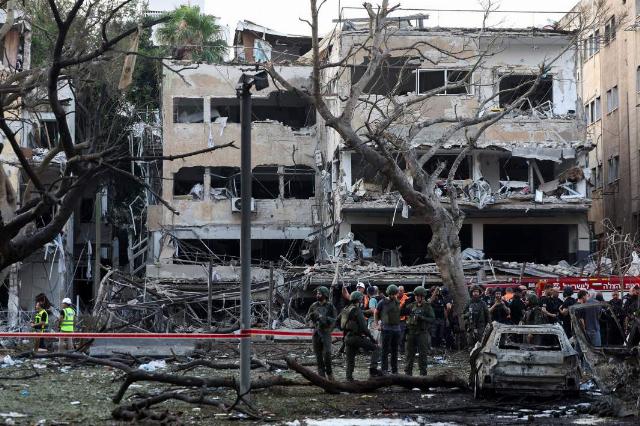
Emergency personnel work at the site of the fall of missiles launched from Iran into Israel, in Tel Aviv.
Image source: Photo: REUTERS/Ronen Zvulun
However, some of the Iranian munitions carry hypersonic warheads that can maneuver in the atmosphere. It is possible to calculate the movement of such a block, but after the maneuver, its trajectory changes and already launched anti-missiles must be retargeted.
In general, the probability of hitting such a target begins to drop sharply and gives indicators of less than 50%. Even for modern missile defense systems.
Of course, it is better to shoot down missiles not over your territory. Large fragments of downed ammunition that continue to fly will either burn up in the atmosphere themselves, or fall to the ground before reaching the target. In extreme cases, they can be finished off with anti-missiles. But objects falling from the sky will cause some kind of damage one way or another.
Transathmospheric arrows
In order to shoot down attacking rocket-propelled munitions as far as possible from the defended territory, special long-range anti-ballistic missiles are needed for atmospheric interception.
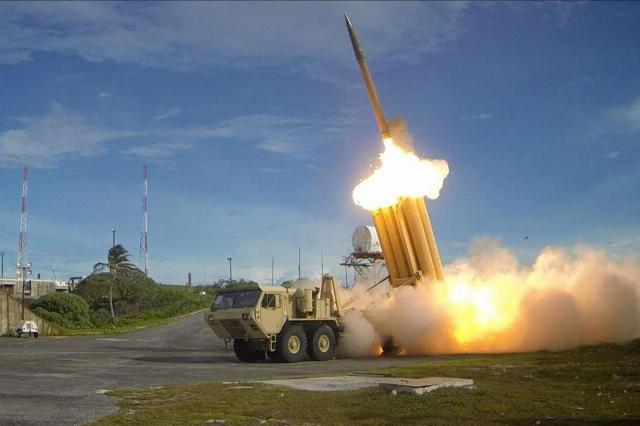
THAAD Missile Defense System
Image source: Photo: Global Look Press/Ralph Scott
Medium—range ballistic missiles fly through near space at altitudes of more than 90-100 km. And in order to shoot them down there, we need a corresponding large enough and homing anti-missile.
Israel has such anti—missiles, such as the American THAAD complex and the Israeli Hetz (Arrow) system. The THAAD complex is located in Israel and is serviced by the US military. It has already been used against Yemeni Houthi missiles and against Iranian missiles.
On June 18, it was the position area of the THAAD-type complex that became a target for Iranian missiles. It may well be that some parts of the complex were hit by a missile that broke through the strait.
The range of the THAAD complex is up to 200 km. Interception heights range from 70-80 to 200 km. The interception itself looks very nice. Missiles of such a complex can cost even more than the ballistic munitions they shoot down.
The second complex is the Israeli Hetz. Since 2000, four modifications of the complex have already been deployed. Hetz was created jointly with the United States, but is considered a national treasure of Israel.
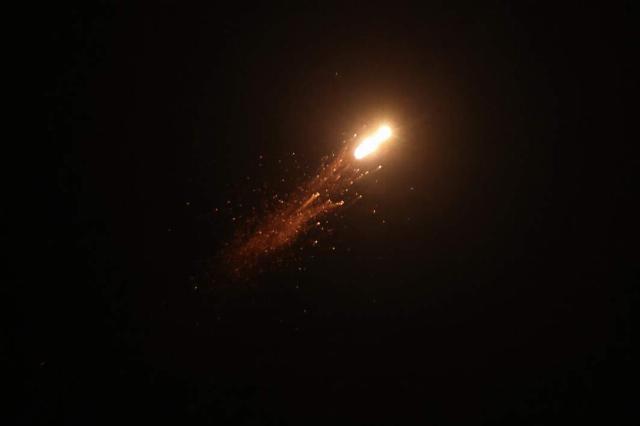
An air defense system launches an interceptor missile over Tel Aviv, Israel
Image source: Photo: Global Look Press/Jamal Awad
The most advanced rocket, the Hetz-3, has been deployed since 2017. The operating altitude is more than 90-100 km, the range is up to 1000 km. Today, many countries are interested in acquiring this complex.
These complexes are the first echelon of Israel's national missile defense system. It is difficult to talk about its effectiveness — there is no data. But we can assume that it is unlikely to be less than 40-50%. Here we must take into account the bonus that trans—atmospheric interception gives - the Iranian hypersonic missiles do not maneuver there, but go straight ahead.
It should be noted that we are talking about effectiveness in the face of attacks by medium-range ballistic missiles. According to them, even our S-400-type complexes can have theoretical indicators at about the same level, since these are a special type of targets. So this is a good indicator. And it can be higher — many rockets reach targets in Israel.
The sky above your head
Next, the middle echelon of missile defense systems — "David's Sling" and "Iron Dome" - begins to work. The first of them has a very decent range — from 70 to 250 km, but was generally designed to intercept less long-range tactical missiles. Of course, this complex may try to shoot down Iranian missiles. It's just that the cost of fairly expensive homing two-stage anti-missiles will increase to defeat them. Interestingly, the complex was purchased by Finland and will be delivered there until 2030. Few details of technical capabilities are published, but it can probably shoot down at least 50% of targets, even relatively heavy ones.
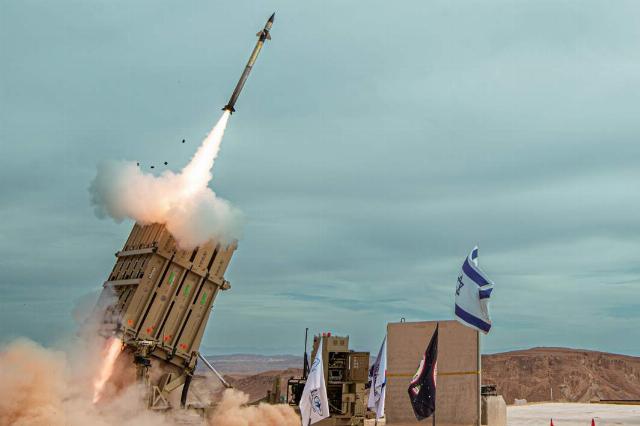
The Iron Dome Missile Defense System
Image source: Photo: Global Look Press/IMDO
The Iron Dome is operating at the final stage. The range can reach 100 and 150 km, but in general, the task of the Iron Dome is to finish off missiles directly in front of the defended object or area.
The launchers of the complex can be seen on the roofs of high-rise buildings. It was created to repel mass attacks by unguided rockets from Palestinians and successfully coped with them, showing an efficiency of about 90%. But Iranian missiles are different, and here the Iron Dome is unlikely to show more than 50% efficiency. Plus, he works like a robot, which is why his rocket consumption is impressive. In addition, its relatively light ammunition cannot always stop heavy and high-speed Iranian warheads. Of course, they can change their flight path, but they will still fall somewhere near the aiming point.
But these are not all the weapons that Israel has in its arsenal. Israel is likely to commission its latest air defense/missile defense system, the Iron Beam laser system, as early as this year.
This system has a range of up to 10 km and is designed to destroy mortar and artillery shells. And of course, it can also work on any other targets moving in the air.

Anti-missile system operation during missile launch from Iran, view from Tel Aviv, Israel
Image source: Photo: REUTERS/Violeta Santos Moura
So far, the participation of the complex in the current conflict has not been noticed, but it may well be that its testing is conducted under the veil of secrecy. There is no information about the effectiveness of this system yet, but it is unlikely to destroy large objects.
Based on the above, we can conclude that half of the missiles are shot down in space. And, let's say, another third is the Iron Dome. It turns out that just over 80% of the rockets fired at Israel. Estimates of the first days of the conflict are about 75%. Right now, it feels like 15 to 25% of the missiles are fired during different attacks.
Thus, the integrated approach works and gives a fairly good result. There are side effects — a large consumption of expensive anti-missiles and falling debris and warheads knocked off their trajectory. The second is especially unpleasant, since if the flight path is disrupted, the warhead can land anywhere. But in any case, all countries that are concerned about missile security have something to think about.
Dmitry Kornev
